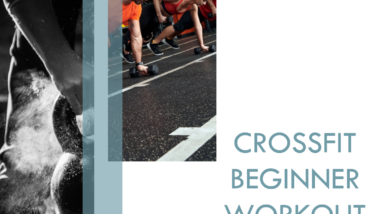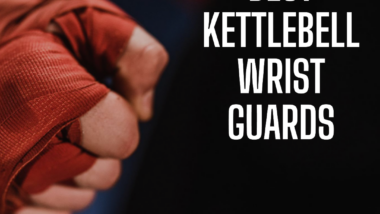Best Kettlebell for Juggling
Looking to juggle your way to kettlebell greatness? Well, you’re in luck! Finding the best kettlebell for juggling is like finding a smooth stone on a beach – it’s all about the perfect fit.
Today, we’ll show you how to choose the ideal kettlebell for your juggling needs. Weight and design are key factors to consider.
You don’t want it too heavy, making control a challenge, but you also don’t want it too light, lacking resistance.
Look for a kettlebell with a balanced weight distribution and a smooth handle for easy and seamless juggling. Remember, the best kettlebell for juggling depends on your skill level and personal preferences.
So, let’s get started and find the kettlebell that will elevate your juggling game!
Weight Consideration
When it comes to juggling, finding the ideal weight is crucial for optimal performance and safety. The recommended weight for freestyle juggling is typically a 12 kg kettlebell.
This weight strikes a balance between maneuverability and resistance, allowing for controlled and effective juggling movements.
It’s important to keep in mind that a kettlebell that’s too heavy can be difficult to control and increase the risk of injury.
On the other hand, a kettlebell that’s too light may not provide enough resistance for effective juggling. Therefore, choosing a kettlebell that’s suitable for your skill level and personal preferences is essential.
Also, the weight distribution and handle design of the kettlebell also play a significant role in maintaining control and stability while juggling. So, be sure to consider these factors when selecting the best kettlebell for juggling.
Importance of Kettlebell Design for Juggling
When it comes to juggling kettlebells, you need to consider the importance of design for optimal performance and safety.
The design of the kettlebell plays a crucial role in your ability to control and maneuver it during your routines. A well-designed kettlebell will have a smooth handle that allows for a secure grip, preventing slippage and ensuring stability.
Also, the weight distribution of the kettlebell should be balanced, allowing for smoother and more controlled movements. This is essential for maintaining proper form and technique.
A poorly designed kettlebell can increase the risk of injury and hinder your ability to perform complex juggling tricks.
Therefore, it’s important to choose a kettlebell with a design that enhances your juggling experience and enables you to achieve optimal results.
Finding the Right Balance for Juggling Kettlebell Weight
To find the right balance for juggling kettlebell weight, you should consider your skill level and personal preferences. It’s important to choose a kettlebell that challenges you without being too heavy or too light.
For freestyle juggling, a 12 kg kettlebell is often recommended as it provides a good balance between weight and maneuverability.
However, keep in mind that this recommendation may vary depending on your individual strength and experience.
It’s also crucial to develop a solid foundation of basic kettlebell exercises before attempting juggling. This ensures that you have the necessary strength and technique to handle the weight and maintain balance while juggling.
Smooth Handle: is a Crucial Feature
As you juggle kettlebells, having a smooth handle is crucial for maintaining a secure grip and executing seamless transitions between movements.
The absence of ridges or rough spots on the kettlebell handle is essential for preventing blisters and discomfort during routines.
A smooth handle allows for effortless spins and flips, enhancing the fluidity and precision of your movements.
It facilitates quick and secure hand switches, a key skill in advanced techniques. With a smooth handle, you can focus on perfecting your technique and coordination without distractions.
It provides a comfortable and reliable grip, allowing you to confidently perform complex juggling patterns and tricks.
When choosing a kettlebell for juggling, prioritize one with a smooth handle to ensure optimal performance and a pleasurable juggling experience.
How Weight Distribution Affects Kettlebell Juggling
To understand the impact of weight distribution, you need to consider how it influences the stability and control of your movements.
The distribution of weight in a kettlebell plays a crucial role in your ability to perform juggling movements effectively.
When the weight is evenly distributed throughout the kettlebell, it allows for better balance and control during swings and flips.
This even weight distribution is particularly beneficial for beginners who are learning basic juggling techniques.
On the other hand, if the weight is concentrated towards the center of mass, it becomes easier to maintain control while performing advanced flips.
Ultimately, the weight distribution of the kettlebell will determine the difficulty and technique required for various juggling movements. Therefore, choosing the best kettlebell with the right weight distribution is essential.

Evaluating Skill Level for Choosing a Juggling Kettlebell
Assess your proficiency level to determine the most suitable kettlebell for juggling. Evaluating your skill level is crucial in choosing the right one for your routine.
If you’re a beginner, it’s recommended to start with a 12 kg kettlebell for freestyle juggling. However, before attempting juggling, it’s essential to master basic kettlebell exercises.
Proper swing technique and the ability to maintain balance with quick feet are important factors to consider.
If you want to advance your juggling skills and try more complex flips like the lateral flip or figure eight flip, you need to have a higher skill level. Remember that kettlebell juggling requires improved reflexes, confidence, and coordination.
Personal Preferences in Selecting a Juggling Kettlebell
When selecting a juggling kettlebell, consider your personal preferences in terms of weight and design.
The weight of the kettlebell should be suitable for your skill level and strength. If you’re a beginner, start with a lighter kettlebell and gradually increase the weight as you gain more experience and confidence.
On the other hand, if you’re an advanced juggler, you may prefer a heavier kettlebell to provide a greater challenge.
Additionally, pay attention to the design of the kettlebell. Look for one with a smooth handle that allows for a comfortable grip and easy transitions between juggling movements.
A kettlebell with a balanced weight distribution will also contribute to smoother and more controlled juggling.
Ultimately, choose a kettlebell that feels comfortable and suits your individual juggling style.
Factors to Consider When Choosing a Kettlebell for Juggling
When selecting a kettlebell for juggling, consider the weight and design of the kettlebell that best suits your skill level and juggling needs.
The weight of it, is crucial for control and injury prevention. It’s recommended to start with a 12 kg kettlebell for freestyle juggling, as it offers versatility and manageability.
A kettlebell that’s too heavy may be difficult to control, while one that’s too light may not provide enough resistance.
The design of the kettlebell is also important. Look for one with a smooth handle and balanced weight distribution for easier and smoother juggling movements.
Tips for Testing and Assessing Juggling Kettlebells
To effectively test and assess juggling kettlebells, it’s important to prioritize safety and ensure the kettlebells durability.
Before testing, make sure it’s sturdy enough to withstand drops. Consider using an expandable kettlebell to minimize potential damage.
When assessing a kettlebell for juggling, always prioritize safety and avoid trying to catch a falling kettlebell to prevent injury.
To test the kettlebells suitability, start by mastering basic kettlebell exercises and ensuring proper swing technique to maintain balance.
Once you have mastered the basics, you can assess the kettlebells usability for advanced juggling flips by practicing techniques such as lateral flips, figure eight flips, and Russian kettlebell juggling.
Remember, the kettlebell juggling benefits, include improved reflexes, confidence, and coordination, so ensure you have mastered fundamental kettlebell exercises before attempting juggling.
Thoughts on Finding the Best Kettlebell for Juggling
To find the best kettlebell, prioritize the weight and design of the kettlebell.
You want a kettlebell that isn’t too heavy, as it can be difficult to control and increase the risk of injury. On the other hand, a kettlebell that’s too light may not provide enough resistance for effective juggling.
Look for a kettlebell with a smooth handle and a balanced weight distribution. This will allow for easier and smoother juggling movements.
Additionally, consider finding a kettlebell that offers good grip and balance for advanced maneuvers like lateral flips and figure eight flips.
Conclusion
So there you have it, aspiring jugglers! Finding the best kettlebell for juggling is all about considering weight, design, and your personal preferences.
Remember to choose one that isn’t too heavy or too light, with a smooth handle and balanced weight distribution.
By taking these factors into account, you’ll be able to enhance your juggling skills and take them to new heights.
Happy juggling!


